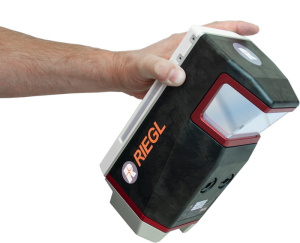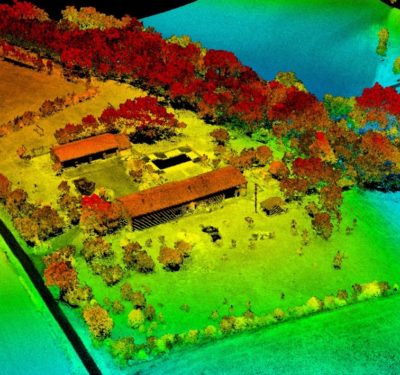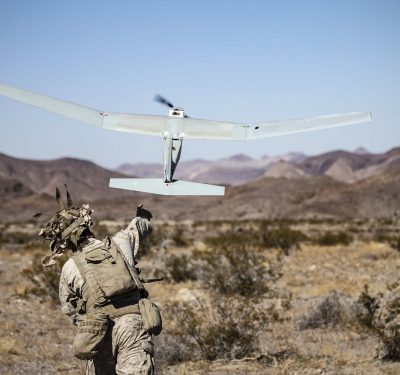
RIEGL’s lightweight, versatile VUX-120 UAV-LiDAR airborne laser scanner.
No doubt, 2020 has been a very special year, with the pandemic forcing us to think and work in new ways. For laser measurement systems manufacturer RIEGL, that meant presenting its new UAV LiDAR sensor at the first-ever virtual edition of InterGEO. “It would be nice to be with you in person,” said Philipp Amon, RIEGL Business Division Manager, Unmanned Laser Scanning. “COVID has affected all of us, and of course we are observing of the new health and safety rules. But meanwhile, surveying goes on. Our customers remain active, demand is high and tenders are being made, so there is no impact on our business.”
Participants from all over the world heard Amon describe the company’s new VUX-120 UAV-LiDAR sensor. This is a lightweight and versatile airborne laser scanner offering a wide field of view and an extremely fast data acquisition rate of up to 1.8 MHz.
The Vux-120 employs Nadir/Forward/Backward (NFB) scanning, where a 100-degree-wide field of view is scanned in alternating planes—vertical down plus10-degree forward oblique and 10-degree backward oblique. “This scan pattern easily gives you almost a complete 3D data set,” Amon said. Weighing in at a mere 2 kilograms, the unit also features an integrated, high-capacity CFast card, for easy and quick data acquisition and transfer.
The system is being combined with, among other UAVs, the Delair-Tech DT26K, Amon said. This fixed-wing drone has one of the longest endurance and flight ranges in the UAV market today. The VUX-120 also integrates the Trimble Applanix APX20 position and orientation system, a GNSS-Inertial OEM solution designed to reduce the cost and improve the efficiency of mapping from small UAVs. Camera options include two Sony Alpha 7Rs or 6000s, multi-spectral cameras and others. A range of accessories and integration kits is also available.
Since 1978, RIEGL has been producing commercial LiDAR systems, now focusing on pulsed time-of-flight laser radar technology in multiple wavelengths. Dr. Martin Pfennigbauer, RIEGL Director Research and Intellectual Property, told Inside Unmanned Systems.
“The VUX-120’s novel NFB scanning scheme, together with the large scan swath of up to 100 degrees, makes this sensor the ideal choice for corridor mapping,” he said. “Squeezing a powerful scan engine into such a small form factor and meeting the weight requirement was a challenge that required our R&D team to break new ground on aspects like, for example, opto-electronic design, thermal management, and additive manufacturing. We are convinced that the effort was worth the while and the VUX-120 will make a strong impact on the market.”
Photo courtesy of RIEGL.






